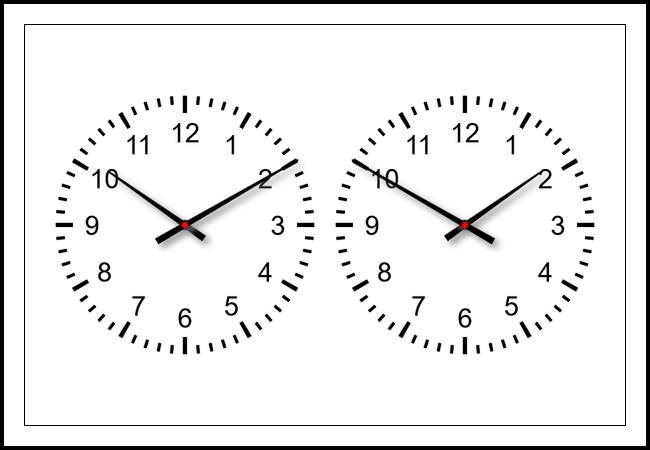What's the Time Mr. Lobo?
Published:
Tend to Past
I recently finished Juan Gómez-Jurado’s novel ‘Red Queen’. An enjoyable read made more so by Nick Caister’s pleasing translation. I’ll be reading the complete trilogy. About a third of the way through the novel I read the following:
They get into the car, buckle their seat belts. Jon rests his hands on the steering wheel at ten past ten, sits staring at the traffic coming down Paseo de la Castellana to Paseo de Recoletos It’s getting toward three in the morning, so there’s not much of it.
When I was taught to drive, the time I was instructed to place my hands on the steering wheel at was ten to two: left hand at the ten hour marker on the dial and the right hand at the two hour marker. The expressions ’ten past ten’ and ’ten to two’ are not idioms, so I hazard nothing has changed in translation. In passing, the very best translators will typically not directly translate source language idioms into the target translated language. They’ll hunt and hunt and hunt for the equivalent target language idiom (or closest thereto). For example, the pot calling the kettle black is lovingly translated into Japanese as:
目くそ鼻くそを笑う
the literal translation being:
the goop in the eye laughing at the snot in the nose

As the above image shows, ’ten past ten’ and ’ten to two’ on a clock dial are pointing to slightly different positions on the dial. The expressions are thus, pedantically, not identical. Practically, though, given the size of the human hands and steering wheels, these instructions result in the same positioning. But why the difference? I’m sure it’s not the ’they drive on the wrong side of the road issue’. Do these expressions tell us more about the cultures using them?
’ten past’ - suggests down, late?
‘ten to’ - suggests up, early?
Can’t be that, surely? I am (currently) at a loss with this difference in telling the time in relation to positioning hands on a steering wheel. Just to throw a further spanner in the works, our friends across the pond and their DMV state the following:
Both hands should be placed on the outside of the steering wheel at the 3 and 9 o’clock positions to maintain control of the vehicle. Placing your hands at the 2 and 10 o’clock positions is no longer recommended because it can be dangerous in a vehicle equipped with airbags.
Hopefully someone much wiser can explain why this change in position ensures improved airbag deployment. However, I’m going to object to the use of o’clock here. The term ‘o’clock’ refers only to the whole hour of time and is the shortened version of ‘of the clock’. This term came into the lexicon via the Middle English of the clokke which referred to clocks and more specifically to clocks that strike the hours. Clokke itself derives from the early French cloche which means a bell. Cloche also refers to the shape of the bell thus the gardeners’ cloche along with the fashionistas’ hat. Furthermore, cloche derived from the Medieval Latin clocca which is also the source for the word cloak. I’ll leave that digression for another day.
So, o’clock means of the hour. In days of yore when a single clock in the village was all the citizens had in order to know the time, on the hour the clock’s bell tolled the number of times matching the hour in question. So ’the 2 and 10 o’clock positions’ would require three hands: one to be placed at the top of the steering wheel to match the position of the hand pointing to the twelve hour marker, with the other two hands on the steering wheel matching the two and ten hour markers respectively. I know, pedantry abounds, but if I can ignore that reference to the twelve hour marker I much prefer this way of expressing the positioning: leaves no wiggle room for my brain to go wild in…
…and go wild it often does when I read unusual phrasing.